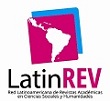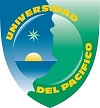What the war did not take. Approaches from ethnography
DOI:
https://doi.org/10.47366/sabia.v5n1a7Keywords:
Violence, Post-Conflict, The Baraya sidewalk, Women’s Empowerment, ResistanceAbstract
The article characterizes the forms of resistance and empowerment that the
Baraya community has constituted in their daily cultural practices. The use of ethnography
as a methodology has allowed us to interpret the diverse meanings of their resistance and
empowerment. It was found that each process they have developed to make resistance to
the adverse situations that have been presented, in which they have been affected directly or
indirectly. Because over time the violence has been maintained in the territories, which has
evolved according to the armed actor that arrives in the area.
Downloads
Published
How to Cite
Issue
Section
License
Copyright (c) 2019 Sabia Scientific Journal

This work is licensed under a Creative Commons Attribution-NonCommercial-ShareAlike 4.0 International License.
















